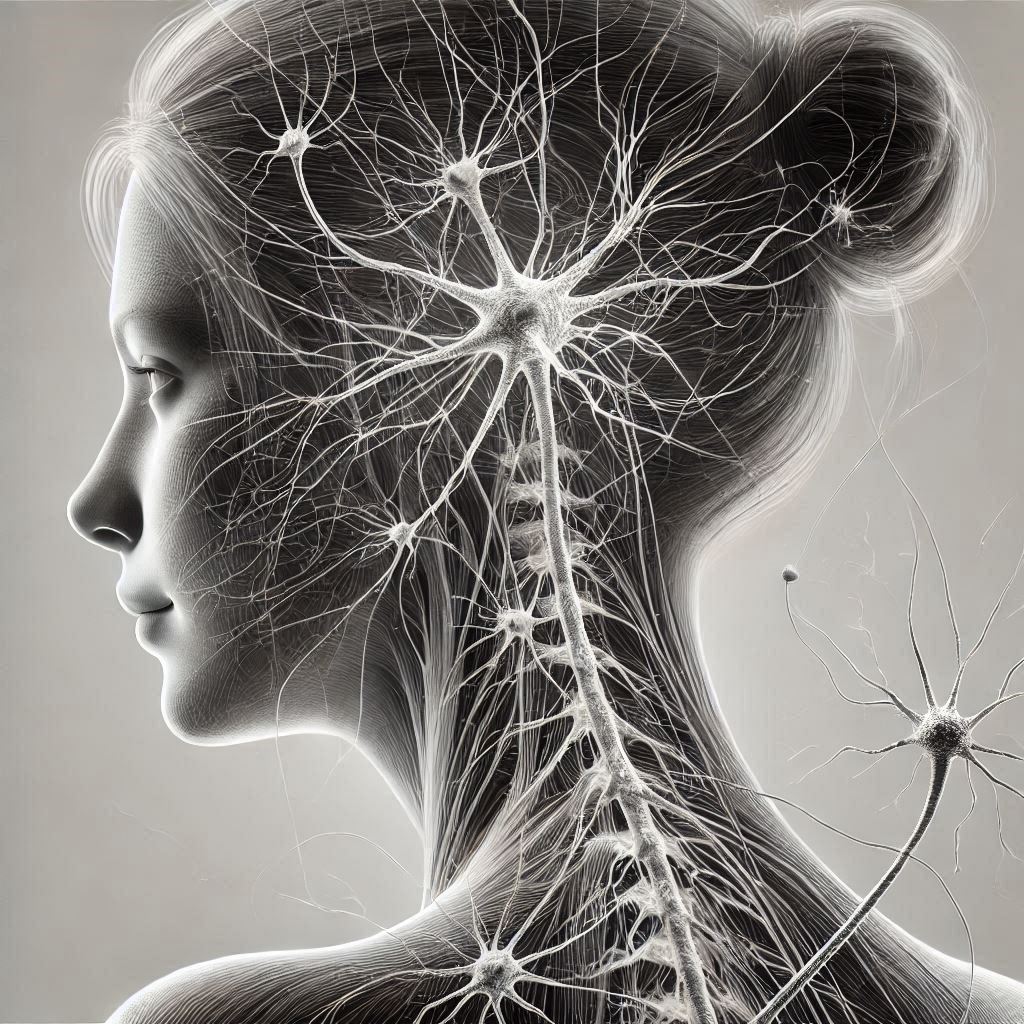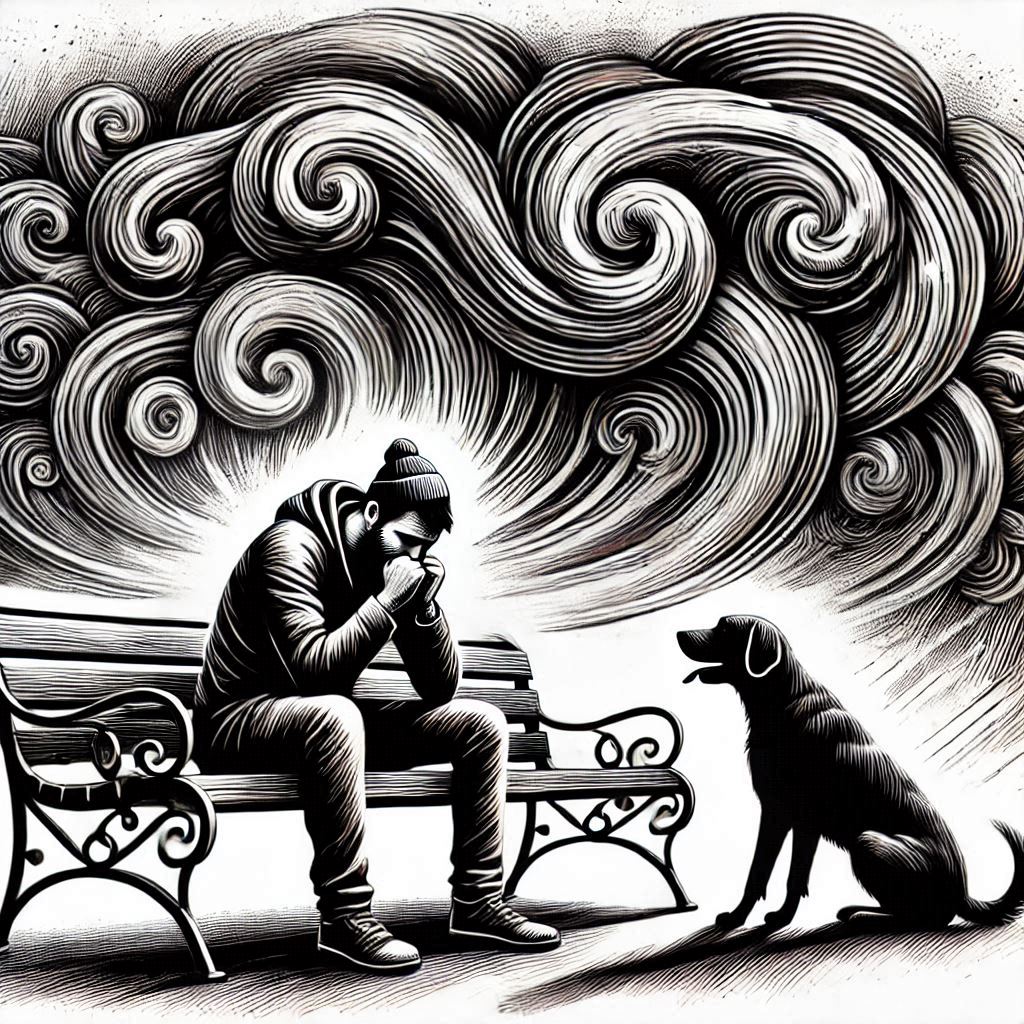Have you ever wondered why some people develop panic disorders after experiencing trauma? The answer lies in the complex interplay between our psychological resilience, genetic predisposition, and the nature of the traumatic event itself. When trauma strikes, it can leave an indelible mark on our mental well-being, sometimes triggering debilitating panic episodes marked by overwhelming fear and physical symptoms like a racing heart and shortness of breath.
In this blog post, we’ll explore the underlying factors that contribute to the onset of panic disorders following trauma. We’ll discuss how individual differences in stress response, past experiences, and even brain chemistry play significant roles in shaping one’s vulnerability to such disorders. Understanding these elements is not only crucial for those affected but also for their loved ones and caregivers who aim to offer meaningful support and effective coping strategies. Let’s unravel the intricate connections between trauma and panic disorders to provide a clearer, more compassionate perspective on this challenging issue.
The Impact of Trauma on Mental Health
When traumatic experiences occur, they can profoundly impact an individual’s mental well-being, potentially leading to various psychological conditions. Let’s explore the different aspects of how trauma can affect mental health:
Types of Trauma
Trauma can manifest in various forms, each with its unique effects on mental health.
- Acute Trauma: This type of trauma results from a single distressing event, such as a car accident or a natural disaster. People experiencing acute trauma often feel immediate psychological distress and emotional turmoil. Imagine the shock and fear someone might feel after a sudden, frightening experience that shakes their sense of safety.
- Chronic Trauma: Chronic trauma involves prolonged exposure to stressful situations, like ongoing abuse or living in a war zone. Over time, this constant state of stress can erode one’s sense of security and lead to long-term emotional issues. It’s like living under a dark cloud, always fearing when the next storm will hit.
- Complex Trauma: Complex trauma stems from repeated exposure to different traumatic events, often during childhood. This type of trauma can cause profound and pervasive effects on mental health, like complex post-traumatic stress disorder (PTSD). Think of it as layers upon layers of distress that make it hard to feel at peace.
Neurobiological Response to Trauma
The brain responds to trauma in intricate ways, involving various regions responsible for processing fear and memories.
- Amygdala: The amygdala, often called the brain’s fear center, plays a key role in initiating the body’s stress response during traumatic events. It triggers feelings of fear and hypervigilance, making a person constantly on edge as if an alarm bell is always ringing.
- Hippocampus: The hippocampus is crucial for memory formation and can be significantly affected by trauma. This can lead to difficulties in recalling specific details of the traumatic event or forming coherent narratives about the experience. It’s like trying to piece together a broken mirror—each shard holds a part of the story, but it’s hard to see the whole picture.
- Prefrontal Cortex: The prefrontal cortex is involved in decision-making and emotional regulation. Trauma can disrupt its function, impacting one’s ability to manage emotions and navigate stress effectively. This disruption can feel like trying to steer a car with a faulty GPS; the directions are unclear and it’s hard to find the right path.
Understanding the diverse forms of trauma and the neurobiological responses to such experiences sheds light on the complex intersections between traumatic events and mental health outcomes. By recognizing these connections, we can foster greater empathy and insight into the challenges faced by individuals dealing with the aftermath of trauma.
For more information on trauma and its effects on mental health, you can explore resources from the American Psychological Association and National Institute of Mental Health.
Understanding Panic Disorders
When it comes to understanding panic disorders, it’s essential to grasp the defining characteristics and triggers that can precipitate intense episodes of fear and anxiety. These disorders can significantly impact an individual’s daily life, creating a sense of unpredictability and distress.
Characteristics of Panic Disorders
Panic disorders are marked by sudden and intense episodes of fear or anxiety that can manifest both emotionally and physically. Here are some key features to look for:
- Sudden Onset: Panic attacks come out of nowhere, without any obvious reason.
- Intense Fear: People often feel an overwhelming sense of doom or terror.
- Physical Symptoms: Common signs include:
- Heart palpitations
- Trembling or shaking
- Sweating
- Shortness of breath
- Chest pain
- Peaking Quickly: These symptoms usually reach their peak within minutes.
- Fear of Losing Control: There is often a feeling of losing control or fear of dying.
Imagine standing on the edge of a cliff, feeling dizzy and your heart racing as you look down—that’s how someone with a panic disorder might feel during an attack.
Triggers and Responses
Understanding what triggers panic attacks and how individuals respond is crucial.
Common Triggers:
- Stressful Situations: Like speaking in public or taking an exam.
- Crowded Spaces: Malls, concerts, or public transportation.
- Specific Phobias: Fear of heights, spiders, or flying.
- Traumatic Memories: Events that remind someone of past trauma.
Typical Responses:
- Avoidance: Steering clear of situations that might trigger an attack.
- Seeking Reassurance: Constantly asking loved ones for comfort and safety.
- Confrontation: Facing the situation head-on to try and overcome the fear.
For example, someone might avoid elevators if they had a panic attack in one before. Alternatively, they might challenge themselves to use the elevator to conquer their fear.
Understanding these aspects of panic disorders helps to build empathy and provides a clearer picture of how these intense experiences shape the lives of those affected. For more information on panic disorders and effective coping mechanisms, you can refer to resources from the Anxiety and Depression Association of America.
The Relationship Between Trauma and Panic Disorders
The connection between traumatic experiences and developing panic disorders is complex. Trauma can deeply impact an individual’s mental health, leading to panic symptoms that are often hard to manage. Let’s explore this intricate relationship.
Post-Traumatic Stress Disorder (PTSD) and Panic Disorders
Post-Traumatic Stress Disorder (PTSD) is a severe psychological condition often linked to the emergence of panic disorders. Those with PTSD have experienced events that overwhelm their ability to cope, such as military combat, natural disasters, or violent assaults. When trauma is not properly addressed, it can lead to panic disorders.
Individuals with PTSD may experience intrusive memories, nightmares, and flashbacks. These symptoms can trigger intense fear and anxiety, manifesting as panic attacks. The unresolved trauma acts like a hidden minefield, where any reminder of the traumatic event can cause a sudden overwhelming panic response.
For instance, a war veteran might hear a loud bang similar to gunfire and suddenly find themselves in a full-blown panic attack. Such experiences illustrate the strong correlation between unresolved trauma and the development of panic disorders.
Hypervigilance and Panic Responses
Hypervigilance is a state of heightened alertness where an individual is excessively sensitive to potential threats. It’s like always having your internal alarm system switched to high alert. Trauma survivors often struggle with hypervigilance, always on the lookout for danger, which can significantly contribute to panic disorders.
When someone is hypervigilant, their body is in a constant state of emergency. This fight-or-flight response can be exhausting and makes them more susceptible to panic attacks. For example:
- Heightened Startle Response: Trauma survivors might react strongly to sudden noises or movements.
- Constant Scanning: They may constantly scan their environment for threats, making it hard to relax.
This kind of perpetual stress can lead to the body’s natural alarm system misfiring, resulting in frequent and intense panic attacks.
Emotional Triggers and Panic Attacks
Emotional triggers are stimuli that remind individuals of their past trauma, leading to panic attacks. These triggers can be specific to the traumatic event and evoke strong emotional responses. Understanding these triggers is crucial in managing and preventing panic attacks.
Common emotional triggers can include:
- Anniversaries of the Trauma: Important dates related to the traumatic event can trigger panic.
- Smells, Sounds, or Sights: Specific sensory details associated with the trauma can evoke panic.
- Emotional Stress: Situations that emotionally stress an individual, even if unrelated to the original trauma, can trigger panic attacks.
Imagine someone who was in a car accident and later experiences panic attacks whenever they hear screeching tires. The sound acts as a bridge to the traumatic event, eliciting a strong panic response.
Addressing these emotional triggers involves therapy and coping strategies. It could be through Cognitive Behavioral Therapy (CBT) or exposure therapy, which helps individuals gradually face their fears in a controlled environment.
For further information, resources from the American Psychological Association and National Institute of Mental Health can provide deeper insights and support strategies. By comprehending the links between trauma and panic disorders, we can foster empathy and awareness, helping those affected navigate their mental health journeys.
Treatment and Coping Strategies
Navigating the journey of healing from panic disorders following trauma requires a multi-faceted approach that combines therapeutic interventions and personalized self-care practices. By understanding the effective treatments and coping mechanisms available, individuals can take proactive steps toward managing their symptoms and reclaiming their sense of well-being.
Therapeutic Interventions
Therapy serves as a cornerstone in addressing panic disorders post-trauma, offering structured techniques to reframe thoughts, manage emotions, and build resilience. Two key therapeutic modalities known for their effectiveness in treating panic disorders are Cognitive-Behavioral Therapy (CBT) and Exposure Therapy.
Cognitive-Behavioral Therapy (CBT)
CBT is a goal-oriented therapy focusing on identifying and changing negative thought patterns and behaviors contributing to panic attacks. It helps individuals understand the connections between their thoughts, feelings, and actions, offering tools to break the cycle of anxiety.
- Identifying Triggers: CBT helps pinpoint what situations or thoughts trigger panic attacks.
- Challenging Negative Thoughts: Individuals learn to question and modify irrational beliefs.
- Building Coping Strategies: Techniques such as relaxation and breathing exercises help manage panic symptoms.
For example, someone might learn to recognize that their fear of elevators is based on exaggerated thoughts and gradually work on calming practices when faced with this situation. Learn more about CBT from the National Institute of Mental Health.
Exposure Therapy
Exposure therapy involves gradually facing feared stimuli in a controlled, safe way, helping individuals become desensitized to their triggers. This method works by incrementally confronting anxiety-provoking scenarios, allowing the person to tolerate discomfort better over time.
- Gradual Exposure: Starting with less anxiety-inducing situations and slowly working up to more challenging ones.
- Desensitization: By repeatedly facing the fear, the intensity of the panic response decreases.
- Mastery Over Fear: Builds confidence in dealing with the fear-inducing situations.
Imagine someone with a fear of public speaking starting by speaking in front of a small group and gradually working up to larger audiences. This systematic approach can diminish their anxiety and build resilience. Explore more about exposure therapy at the APA.
Self-Care Practices
Apart from professional therapy, incorporating self-care practices and lifestyle adjustments can significantly enhance one’s overall well-being and complement therapeutic interventions in managing panic disorders post-trauma. By prioritizing self-care, individuals can cultivate resilience, reduce stress, and foster emotional balance.
Explore some self-care techniques and lifestyle adjustments:
- Regular Exercise: Physical activity helps regulate stress hormones, boost mood, and promote relaxation. Engaging in activities like yoga, walking, or swimming can alleviate anxiety and improve overall mental health.
- Mindfulness and Meditation: Practicing mindfulness techniques and meditation enhances self-awareness, reduces rumination, and increases emotional regulation. By staying present in the moment, individuals can cultivate calmness and reduce panic symptoms’ intensity.
- Healthy Sleep Habits: Prioritizing adequate sleep is crucial for mental health and emotional well-being. Establishing a consistent sleep routine, creating a restful environment, and practicing relaxation techniques before bedtime can improve sleep quality and reduce anxiety.
- Nutritious Diet: Eating a balanced diet rich in fruits, vegetables, whole grains, and lean proteins supports both physical and mental health. Nutrient-dense foods provide essential vitamins and minerals that promote brain function and emotional stability.
- Social Support: Connecting with supportive friends, family members, or support groups provides valuable emotional reassurance and understanding. Sharing experiences, seeking advice, and receiving encouragement from others can foster a sense of community and reduce feelings of isolation.
By integrating these self-care practices into daily routines, individuals can enhance their resilience, promote emotional well-being, and establish a foundation for long-term recovery from panic disorders associated with trauma. Embracing a holistic approach that combines therapeutic interventions with self-care strategies empowers individuals to navigate their healing journey with compassion and strength.
For further information on self-care practices and coping strategies, resources from reputable sources like the American Psychological Association and National Institute of Mental Health can offer additional insights and support. By prioritizing self-care alongside professional treatment, individuals can embark on a path toward healing, growth, and emotional well-being in the aftermath of trauma-induced panic disorders.
Support and Community Understanding
Navigating the tumultuous waters of panic disorders following trauma can feel like an isolating journey, but the presence of a strong support network and a compassionate community understanding can serve as lifelines of hope and resilience. Here, we delve into the vital role that support systems and communal empathy play in fostering recovery and empowerment for individuals grappling with the aftermath of trauma-induced panic disorders.
The Power of Support Networks
Support networks encompass a web of relationships that offer emotional validation, practical assistance, and a sense of belonging to individuals struggling with panic disorders post-trauma. These networks can include family members, friends, therapists, support groups, and online communities united by a shared commitment to understanding and empathy.
Benefits of Support Networks
- Emotional Validation: Having a support system that acknowledges and validates one’s feelings can reduce the sense of isolation and stigma often associated with mental health challenges.
- Practical Assistance: Support networks can provide tangible help, whether through accompanying individuals to therapy sessions, assisting with daily tasks during panic episodes, or simply offering a listening ear in times of distress.
- Sense of Belonging: Feeling connected to others who have similar experiences or who offer unconditional acceptance fosters a sense of community and reduces feelings of alienation.
In the words of renowned author H. Jackson Brown Jr., “Remember that the most valuable antiques are dear old friends.” Building and nurturing supportive relationships can be a cornerstone of healing and growth for those navigating the complexities of panic disorders post-trauma. The Mental Health America provides excellent resources for connecting with support networks and understanding their impact.
Community Understanding and Empathy
Community understanding of mental health challenges, including panic disorders arising from trauma, is essential in dismantling stereotypes, fostering inclusivity, and promoting a culture of empathy and support. When communities actively engage in destigmatizing conversations and prioritize mental well-being, individuals feel seen, heard, and valued.
The Role of Community Understanding
- Destigmatizing Conversations: Open dialogues about mental health challenges help break down barriers of shame and silence, creating a safe space for individuals to seek help without fear of judgment.
- Promoting Inclusivity: Communities that embrace diversity and inclusivity create an environment where individuals from all backgrounds feel welcome and supported in their journey toward healing.
- Providing Resources: Access to mental health resources, educational workshops, and community support services reinforces the message that seeking help is a sign of strength, not weakness. Organizations like the National Alliance on Mental Illness are pivotal in offering resources and fostering inclusive conversations.
As psychiatrist and author Dr. Judith Orloff eloquently states, “To heal from panic disorders, we need a strong support system. Surround yourself with positive people who understand your struggles.” Community understanding acts as a beacon of light, guiding individuals through the shadows of panic and trauma toward a path of healing and resilience.
Cultivating Empathy and Resilience
Empathy is a powerful force that bridges the gap between individuals experiencing panic disorders and those offering support. By stepping into another person’s shoes, listening with compassion, and extending kindness without judgment, communities can cultivate a culture of empathy that nurtures healing and resilience.
Practices for Cultivating Empathy
- Active Listening: Paying full attention to someone sharing their experiences, without interrupting or formulating responses, demonstrates genuine care and empathy.
- Validation and Affirmation: Acknowledging the emotions and struggles of individuals with panic disorders validates their experiences and fosters a sense of understanding and connection.
- Offering Practical Support: Providing practical assistance, whether through accompanying someone to therapy appointments, offering transportation, or creating a safe space for open dialogue, shows tangible support and care.
As American poet Maya Angelou profoundly remarked, “I think we all have empathy. We may not have enough courage to display it.” Embracing empathy as a guiding principle in community interactions not only enhances understanding but also nurtures a culture of compassion and support for all individuals navigating the complexities of mental health challenges.
In conclusion, the synergy between robust support networks, community understanding, and empathetic practices forms a tapestry of healing and empowerment for those traversing the intricate landscape of panic disorders post-trauma. By fostering a culture of inclusivity, compassion, and active support, communities can serve as beacons of hope and resilience, offering solace and strength to individuals on their path toward recovery. Embracing the power of support and community understanding, we weave a narrative of unity and healing, where every voice is heard, and every journey is honored.
For additional insights on building supportive communities and promoting mental well-being, resources from organizations like Mental Health America and National Alliance on Mental Illness offer valuable information and guidance. Together, let us create a world where compassion reigns, understanding flourishes, and support abounds for all those touched by the profound impact of trauma-induced panic disorders.
Conclusion
In the intricate tapestry of trauma and its aftermath, the journey from experiencing panic disorders to finding healing and resilience is as unique as each individual’s story. The impact of trauma can shake the very foundations of one’s mental well-being, leaving a profound imprint that may manifest in debilitating panic attacks and overwhelming fear. However, amidst the shadows of despair, there is a glimmer of hope—a path illuminated by empathy, understanding, and the unwavering support of a compassionate community.
Navigating the Path to Healing
The road to recovery from trauma-induced panic disorders is a winding one, marked by challenges that test the limits of one’s strength and resilience. Yet, it is also a path lined with opportunities for growth, introspection, and transformation. By acknowledging the depth of one’s experiences, embracing vulnerability, and seeking help from supportive networks, individuals can begin to unravel the complexities of their trauma and pave the way for healing.
Embracing Resilience and Growth
In the crucible of trauma and panic disorders, resilience emerges as a beacon of light, guiding individuals through moments of darkness and uncertainty. It is through the cultivation of resilience that one can find the inner fortitude to confront fears, challenge negative beliefs, and ultimately reclaim a sense of agency over their mental well-being. Every step taken towards healing is a testament to the innate strength and courage that resides within each individual, a reminder that growth is not only possible but inevitable in the face of adversity.
A Community of Compassion and Understanding
The journey towards healing is not one that can be traversed alone. It is in the embrace of a supportive community, steeped in empathy and understanding, that individuals find solace, validation, and a sense of belonging. Through open dialogue, destigmatizing conversations, and acts of kindness and compassion, communities can become pillars of strength, offering unwavering support to those grappling with the aftermath of trauma-induced panic disorders.
As we navigate the complexities of mental health challenges, let us remember that healing is not a linear process—it is a mosaic of setbacks and triumphs, moments of despair and rays of hope. By fostering a culture of inclusivity, compassion, and active support, we create a world where every voice is heard, every journey is honored, and every individual is empowered to embrace their path towards healing and growth.
In the tapestry of trauma and recovery, each thread represents a step taken towards wholeness, each knot tied with the intention of resilience, and each pattern woven with the colors of empathy and understanding. May we continue to walk this path together, supporting one another, lifting each other up, and weaving a narrative of unity and healing that transcends the shadows of panic and trauma. The journey towards healing is not a solitary one—it is a collective endeavor, guided by the light of compassion and the promise of growth. As we move forward, let us do so with courage, kindness, and a commitment to creating a world where healing is not just a destination but a way of being.








